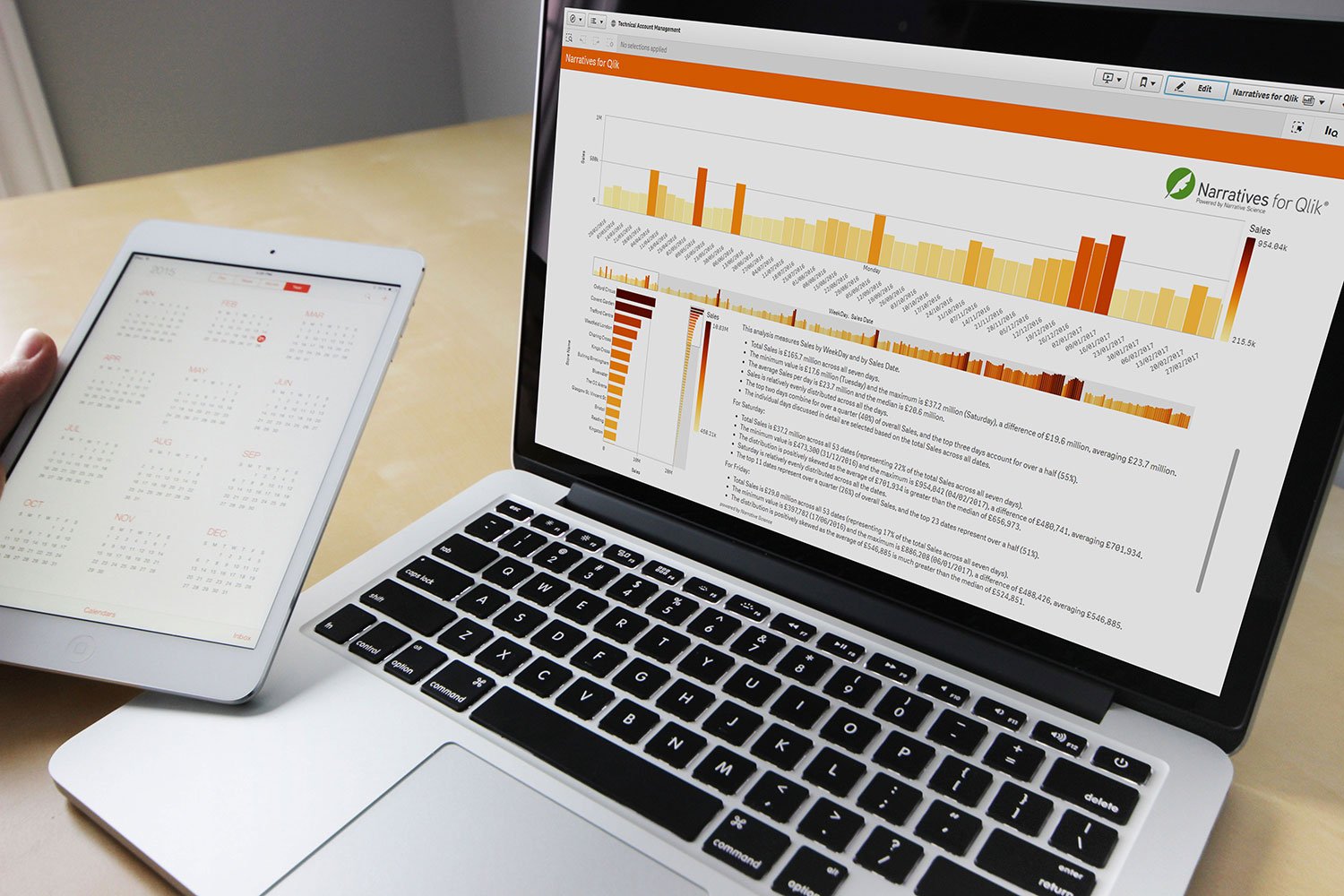Trends in the BI Marketplace
Companies that have already harnessed the power of data have secured a hugely competitive advantage and generated innovation that’s enabled positioning above their competitors. It wasn’t long ago that obtaining, digesting and distributing business data was a full-time role, perhaps even a full team’s role, but the previous decade has seen unparalleled development in business intelligence, its collation and readability.
Never before has so much data been available so swiftly and simply, and no more simply than via the ground-breaking Qlik platform. As an official Qlik partner and BI consultancy, we enjoy divulging the latest news and evolutions – that’s why we want to share our expectations for digital BI over the coming months and years.
So, we teamed up with Qlik for the recent Qlik Sense Tour to collate some predictions which include AI, hybrid clouds and the death of ‘big data’… read on to find out why.
INTERACTIVE VISUAL RENDERING
The first big trend that’s taking hold is the move from basic visual rendering to context-driven visual analytics, which will enable simpler visualisation of every aspect of your data.
It means an end to consuming only the data you can see, the end result of a set of queries in report format. Instead you can visualise the data throughout preparation and acquisition, while seeing and understanding its lineage – and the whole process will be presented in an easy-to-digest visual format.
This trend is driven by organisations becoming more data literate, and leaving the ones that aren’t behind. According to MIT and Emerson University, data literacy “includes the ability to read, work with, analyse and argue with data” and that only comes with true visualisation.
DEATH OF ‘BIG DATA’
The second trend is data consumption. Combining data sources is where the true value lies and this has become easier, faster and generally more efficient in recent years. Easy access to higher quality data is going to drive a change in the way we consider ‘Big Data’.
Most ‘Big Data’ projects have met with limited success. Throwing the data into a data lake, or hoarding it with no clear purpose is inefficient. That’s always been our opinion at both Ometis and Qlik but Gartner validates this further by explaining that, through 2018, 90% of deployed data lakes will be useless as they are overwhelmed with information assets captured with no clear plan.
That’s the key here. It’s great having lots of data but you must still make sense of it. It’s not about size but combinations of different data sources, regardless of where the data is coming from. It’s why Gartner is predicting that by 2019, 75% of analytics solutions will incorporate 10 or more external data sources, and that 100% of enterprises will purchase external data.
AI… BUT NOT AS WE KNOW IT
We are beginning to see focus shift from ‘advanced analytics’ to ‘advancing analytics’… or from BI to AI but not necessarily AI as you may know it! Let us explain…
Advanced analytics will continue to expand in companies and the market in general, we know the creation of data models is dependent on highly-skilled experts, as is the governance of creations of these data models. However, many more people should be able to benefit from those models once they are created, enabling them to be brought into self-service tools.
There is clearly something going on in the area of Artificial Intelligence. People are talking about Deep Learning and Machine Learning and in fact, Artificial Intelligence is the new ‘Big Data’. We believe analytics can be advanced by increased intelligence being added into software but to really make the most of AI, it needs to compliment and assist rather than replace.
We know it’s as important to ask the right questions as it is to get the right answers. Processes like synthesis, non-linear thinking, and asking the right question, as well as instincts will continue to be provided by humans. The sweet spot will be the combination of human reasoning with machine learning and the result will be better data literacy and faster delivery.
HYBRID CLOUDS
The final trend we want to talk about here is the move from on-premise to cloud hosting – and this trend may surprise you but we believe the mass move to the cloud will peak in 2017.
The battles between public cloud infrastructures like Amazon, Google and Microsoft will continue to heat up. After all, their ultimate goal is to own all the data and processes, but the single-stack approach didn’t work out on-premise and we don’t see it being much different in the cloud.
Workloads, data, publishing – these things need to sit in many places. That’s why we believe Hybrid Cloud Analytics will emerge as the dominant design, where platform-based, visual analytics is available on-premise and/or in the cloud publicly or privately depending on the customers’ specific needs.
CONCLUSION
There are exciting times ahead in the realms of data. It’s clear that direct access to data will ignite a better understanding of its power and drive a greater need for visualisations that help organisations make informed decisions across all areas of their business.
Ometis’ role is to facilitate organisations understand the true nature of these trends and the power they have for decision makers. These trends are not only being addressed by the Qlik platform, they’re being fuelled by it.
If you want to know more about Qlik and how it can help you, don’t hesitate to get in touch and a member of the Ometis team would be happy to discuss the data-driven opportunities we can help you unlock.





Comments